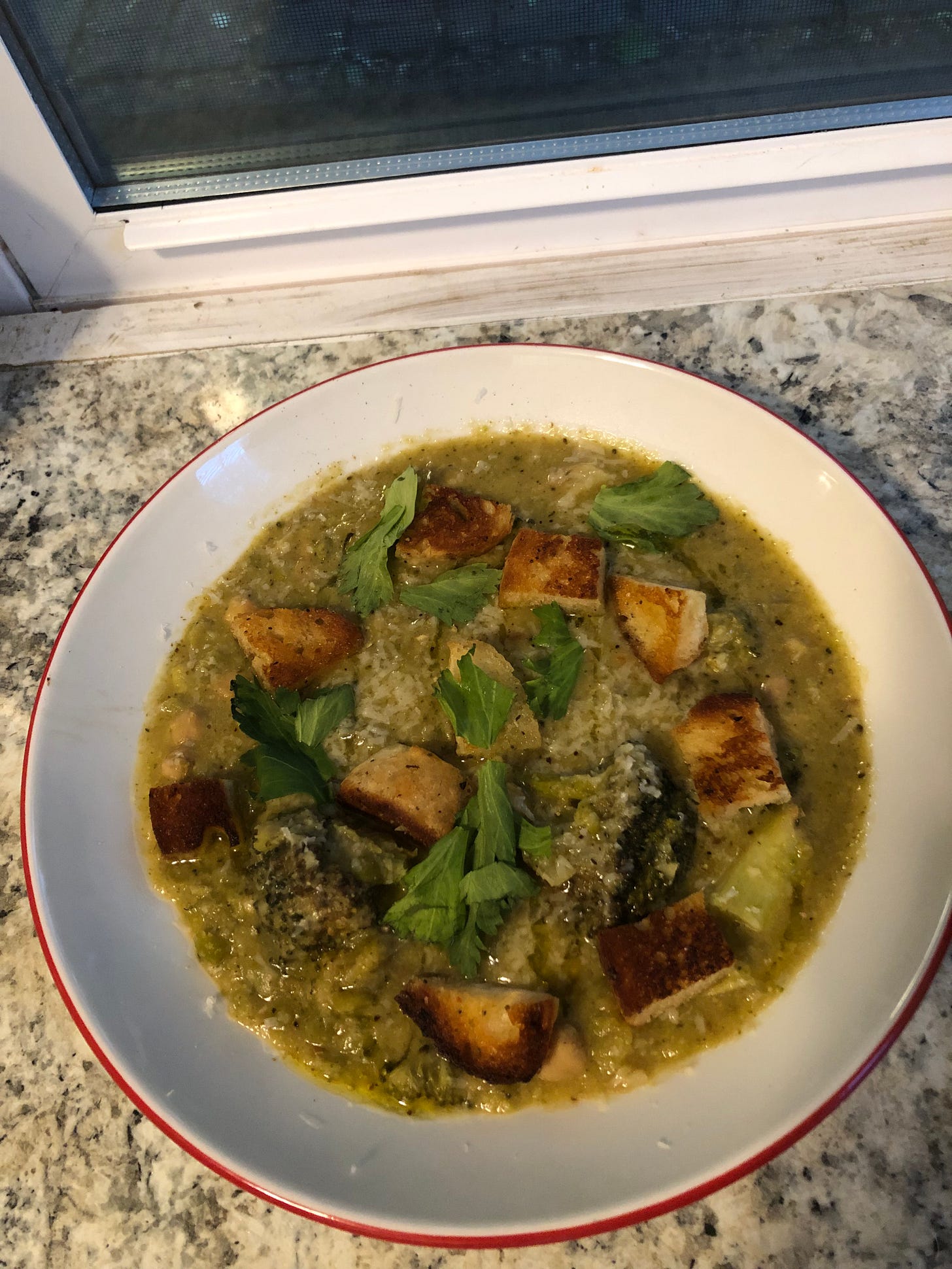Perhaps you have lost a sense of focus and clarity, or ambition remains a trait you cannot apply across as many facets of your life as you'd like. Maybe a sense of direction has been lost.
Soup is the salve for more than the encroaching autumn. Soup is forgiving and can be forgiven. If you've over seasoned with salt, add some apple cider vinegar to regain some clarity. If the soup is too watery, keep it over medium low heat with the lid off and let it concentrate. Or, add a can of chickpeas, or cannellini beans, and puree the soup until it reaches a thickness that is pleasing. If you're the person who keeps parmesan rinds in their freezer throw two or three in the pot and let their sharp umami add depth. If, out grocery shopping, you got a tad overzealous and splurged on more vegetables than you had immediate plans for, turn them into soup.
To view things through a practical lens soup is the perfect weekday dinner when you've pushed thoughts of feeding yourself to the far ends of the brain. Unlike so many other forms of cooking soup follows the loosest format possible; it can be done in 15 minutes or 3 hours, requires as little as water from your sink, a jar from the cabinet, and nearly anything in the fridge. With the slightest effort and some patience, as well as some dashes of oil, a knob of butter, and something crunchy, soup will answer the foggiest notions of what is supposed to be with what is.
Split Pea, Broccoli, and Chickpea Soup
As I work through my late 2024 project of using up spices and jars from my cabinet and bags of various scrapes and stocks from my freezer, I had a glimmer of success cooking lentils. Up till this point in my life every bag of lentils I have made has tasted like muddy, crunchy water. But in finishing up crinkled bags of dried beans and chilis, I made the last of some Puglian lentils that did not suck. I attribute the success to using the proper amount of water, letting them cook for as long as they wanted (and not when I wanted them to be done) and a good fat thumb's worth of butter. The success inspired me to try split peas.
With a fresh bag of green split peas and a giant head of broccoli in the fridge the format of soup was almost complete. A can of chickpeas added to the process for heft, protein, and creaminess. What follows is a completely adaptable, forgiven structure of a dinner when the first frost warnings extend to two nights in a row.
Half a bag of split peas (this could be lentils, or dried beans soaked the night before, or two cans of any white bean)
A large head of broccoli (any vegetable you would like to roast and blend; cauliflower, fennel, squash)
A can of chickpeas (entirely optional, and could be a can of any bean)
Half a large onion, diced
2 celery stocks, diced; leaves removed and saved
4 garlic cloves, minced
A dash of red pepper flakes
A parm rind (optional)
2 slices of bread, cubed
Preheat the oven to 400F. Cut the broccoli into pieces and discard any extremely fibrous bits, but save most of the stalks. Put on a sheet tray and season with olive oil, salt, pepper, and any spice you like. I chose cumin. Place in the oven and cook for 20 minutes. Add the chickpeas. Then cook until broccoli (or whatever veggie you've chosen) can easily be pierced with a knife.
While the broccoli cooks, add a healthy glug of olive oil to a dutch oven or soup pot and heat to medium. Add the celery and onions and season with salt and pepper. If you have a carrot to complete the mirepoix, do so. Sweat until they become translucent. Try to avoid taking on too much color. Add the garlic and chili flakes, cook and stir for a minute or so, and add the split peas. Add enough water to cover. Add the parm rind, turn the heat up until the water boils, place the lid on the pot, and turn heat to low. Cook until the split peas (or beans) are tender. During this process your vegetable will probably be done cooking. Add it and the chickpeas to the pot once your split peas are cooked through.
To achieve a great texture, use an immersion blender to puree about half the solids in the soup. If you don’t have an immersion blender ladle out three to four cups of the soup in a normal blender, pulse a few times, and add back to the pot. Doing this step gives the soup a blend of rusticity with precision; smooth and chunky. In short, it's just a better soup eating experience. Add a pat of butter to the soup and keep on a very low simmer. Fry the cubed bread in butter or oil until it is crunchy and brown.
Ladle the soup into a bowl and add a small stream of olive oil, fresh cracked pepper, a few shavings of Parm, the celery leaves, and your croutons.


